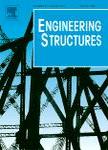版权所有:内蒙古大学图书馆 技术提供:维普资讯• 智图
内蒙古自治区呼和浩特市赛罕区大学西街235号 邮编: 010021

作者机构:Chonnam Natl Univ Dept Architecture & Civil Engn Gwangju 61186 South Korea Univ Transport & Commun Fac Civil Engn Dept Urban Transport & Marine Coastal Engn 3 Cau GiayLang Thuong Hanoi 100000 Vietnam Pusan Natl Univ Dept Civil Engn Busan 46241 South Korea Chonnam Natl Univ Dept Landscape Architecture Gwangju 61186 South Korea
出 版 物:《ENGINEERING STRUCTURES》 (Eng. Struct.)
年 卷 期:2025年第329卷
核心收录:
学科分类:08[工学] 081402[工学-结构工程] 081304[工学-建筑技术科学] 0813[工学-建筑学] 0814[工学-土木工程]
基 金:National Research Foundation of Korea (NRF) - Korean government (MSIT) [2021R1A2C1005587]
主 题:Infrared thermography (IRT) Concrete structures Delamination Deep learning Object detection Data augmentation YOLO
摘 要:Coupling infrared thermography (IRT) with deep learning is a potential approach to address the limitations of conventional IRT-based concrete delamination identification. However, it remains under-explored, mainly due to the scarcity of infrared data. This study examined numerous advanced object detectors, including Faster R-CNN, SSD, and the variants of YOLO versions (YOLOv5, YOLOv6, YOLOv7, YOLOv8, YOLO-NAS, and YOLOv9) to comprehensively evaluate their applicability on a self-prepared infrared dataset comprising 12,000 images of artificial defects. The results demonstrated that most of the selected models worked efficiently on the IRT dataset with precision, recall, F1-score, and AP50 greater than 91 % and real-time speeds higher than 45 FPS. The effectiveness of each model was elucidated, and the most suitable frameworks for delamination detection systems were proposed. Interestingly, newer versions of the selected YOLO models failed to surpass their predecessors. Moreover, larger variants did not outperform smaller ones within each YOLO version. Additionally, the effects of various IRT experimental conditions, image processing techniques, and data augmentation strategies on the model s performance were thoroughly investigated. Consequently, the capabilities and limitations of the automated approaches presented in this work form a solid foundation for further studies on automatically detecting internal defects in concrete structures using deep learning models and IRT inspection data.